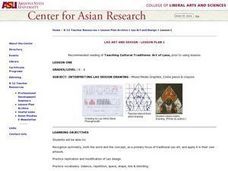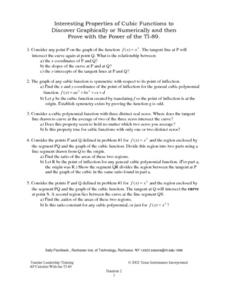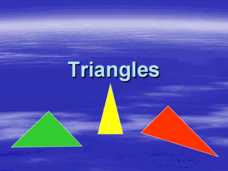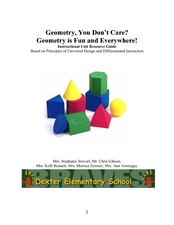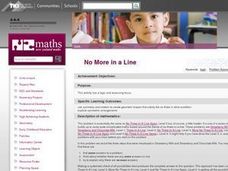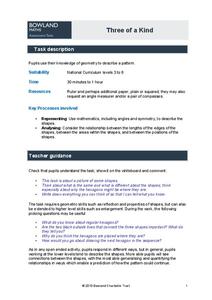Curated OER
Side by Side: Butterfly Wings and Symmetry
Students observe butterfly images and then draw and paint their own design. They use this activity to explain symmetry.
Curated OER
Symmetrical Snowflakes
First graders, exploring lines of symmetry, follow directions to create a symmetrical snowflake from their own homemade icing. As a class, they discuss lines of symmetry and determine if specific shapes are symmetrical. After the lesson,...
Alabama Learning Exchange
Origami Geometry
Origami is an excellent way to combine Japanese culture, art, and geometric shapes into one engaging instructional activity! Scholars begin by listening to the story Sadako and the Thousand Paper Cranes and learn the origin of...
Curated OER
Symmetrical Design: Pennsylvania Barn Signs
Second graders explain and apply the visual arts elements and the design principle of symmetry and apply media, techniques, and processes. In addition, they describe how different materials, techniques, and processes cause different...
Curated OER
Interpreting Lao Design Drawing
Pupils identify symmetry as a word and concept using drawings. The lesson is cross-cultural using traditional Lao Art. The goal is to then apply the skills of symmetry to personal works of art that are produced.
Curated OER
Origami Ducks: Geometry, Listening, and Following Directions
Make origami ducks with your class to reinforce geometry concepts and vocabulary; develop fine motor and visual translation skills; and enrich study of Japanese culture, the pond habitat, or migration. Create a whole group "worksheet"...
Curated OER
Reflections in the Plane
Have your class explore the concept of reflections as they use Cabri Jr. to construct a triangle and reflect it over a line. Learners reflect shapes across the coordinate plane and across the lines y = x and y = -x.
Curated OER
Interesting Properties of Cubic Functions to Discover Graphically or Numerically
Learners investigate the slope of a cubic function. They find the tangent line of the cubic function at point P, and discuss the relationship between point P and point Q, the point the tangent line intersects the cubic function. ...
Curated OER
Am I Seeing Double?
Students explore symmetrical design and lines of symmetry. For this fourth grade geometry lesson, students create their own symmetrical design and identify and label the lines of symmetry. Students use one design to create a...
Curated OER
Mira, Mira on the Wall: Reflections
Learners investigate and perform reflections and symmetry. In this geometry lesson, students compare and contrast the relationship between reflections and symmetries.
Curated OER
Draw the Other Half
How can you make the two halves symetric? Scholars use the concept of symmetry to complete five images which are only half-drawn. The fun part about this exercise is that they aren't copying geometric shapes. There is a face, sun, kite,...
Baylor College
Water: The Math Link
Make a splash with a math skills resource! Starring characters from the children's story Mystery of the Muddled Marsh, several worksheets create interdisciplinary connections between science, language arts, and math. They...
Curated OER
Isosceles Triangles
In need of a fun way to define an isosceles triangle? This activity has learners fold a paper in half and then cut it to create an isosceles triangle. They determine the line of symmetry by folding the triangle in half and then use the...
Curated OER
Design a Colonial Garden
Students explore botany by completing an art design activity in class. In this gardening history lesson, students identify the plants and crops utilized in the Colonial era for both food and medicine. Students utilize geometry to create...
Curated OER
Symmetry of Flag
For this symmetry of flags activity worksheet, students examine the symmetry of the flags of the nations of the European Union.
Curated OER
Pattern Block Design
In this using pattern blocks to create a design instructional activity, learners read and apply criteria to create a design with pattern blocks, trace it, and draw lines of symmetry. Students complete four pattern block activities.
Curated OER
Sled Kite Proportions
Students build sled kites. in this kite building lesson, students must read directions for kite building and enlarge the proportions of the given kite pattern. Students focus on the angles and line of symmetry in their kite.
Curated OER
Perfectly Puzzling Pentominoes
Second graders utilize manipulatives (pentominoes) to demonstrate knowledge of: lines of symmetry, slides, reflections (flips), rotations (turns), area, and perimeter. This lesson gives students a meaningful way to practice these...
Curated OER
Polygons
In this polygons worksheet, students read about and complete many activities involving triangles, angles, and symmetry. Students complete 17 pages of activities.
Curated OER
Geometry is Fun and EverywhereGeometry, You Don’t Care? Geometry is Fun and Everywhere
Third graders investigate shapes in our world. For this geometry lesson, 3rd graders describe plane and solid shapes and identify angles, solid objects and lines of symmetry. Students use online resources, graphic organizers and conduct...
Curated OER
No-More-In-A-Line
Students and teacher discuss square windows and their symmetry. Students work on the problem given and discuss any difficult ideas. They work in groups to use a systematic approach to get all possible answers.
Curated OER
Lines of Symmetry
In this lines of symmetry learning exercise, students check either yes or no to determine whether 3 pictures have rotational symmetry or not. A reference web site is given for additional activities.
West Contra Costa Unified School District
Key Features of Graphs
The key is ... After a day of instruction on key features of graphs, groups create a poster and presentation on the key features of their given function graph. The resource provides an extension activity of "telephone" using...
Bowland
Three of a Kind
One is chance, two is a coincidence, three's a pattern. Scholars must determine similarities and differences of a regular hexagon undergoing dilation. They look at lengths, angles, areas, and symmetry.






